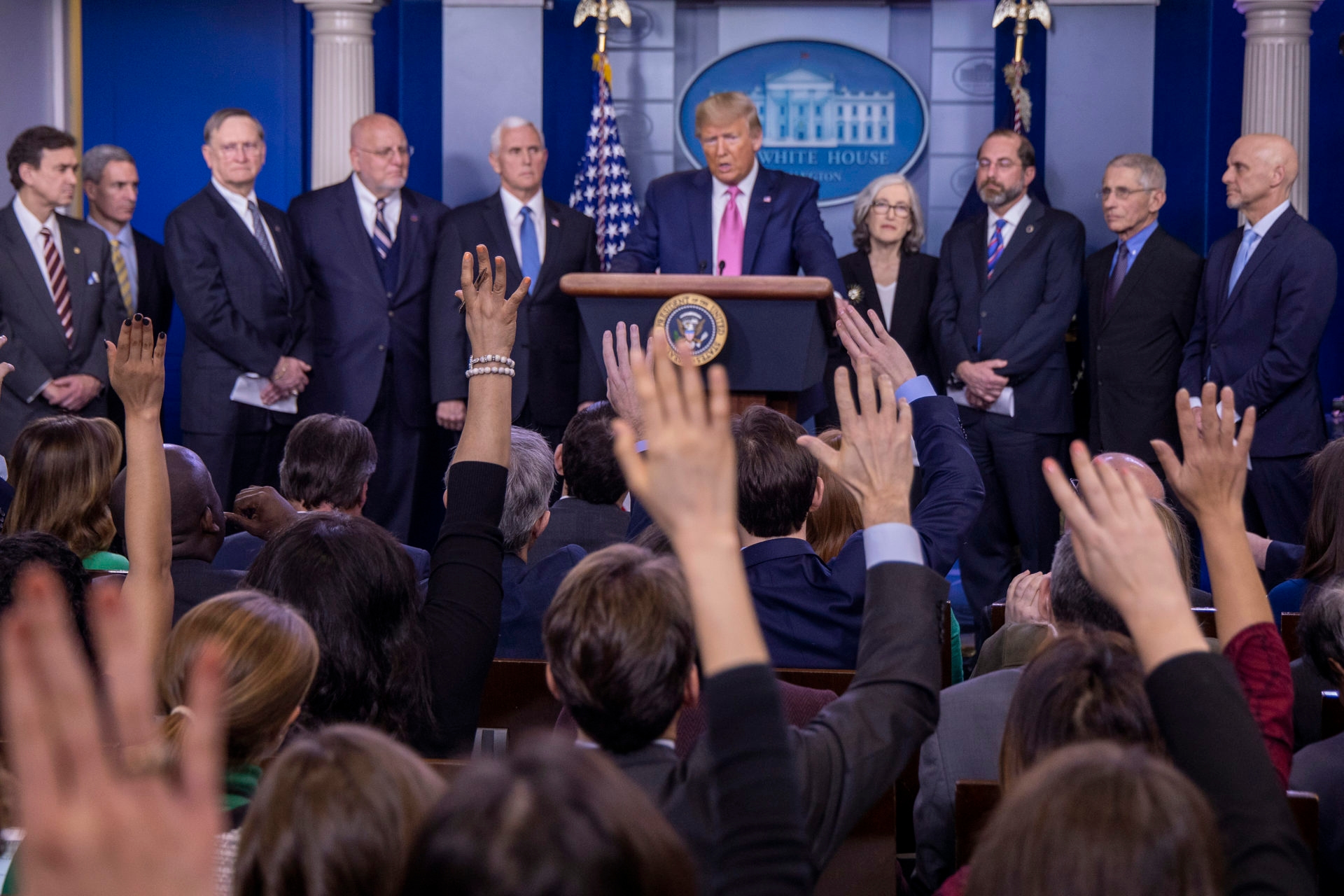Coronavirus Outbreak Highlights Need for More Health Data Transparency, Experts Say

As cases of the coronavirus mount and federal officials brace for community transmission, experts are pointing to an opaque system of inaccessible medical records as a potential obstacle in mitigating the spread of the virus throughout the United States.
The acceleration of the outbreak in recent days, prompting the Centers for Disease Control and Prevention to recommend schools and businesses prepare for possible closures, comes as the Trump administration prepares to release finalized interoperability and information blocking rules, crafted by the Health and Human Services Department’s Office of the National Coordinator for Health IT (ONC).
Morgan Reed, president of The App Association trade group and executive director of the Connected Health Initiative, a coalition of roughly 900 members representing industry groups, physicians, academic medical centers, technology giants such as Apple Inc. and Microsoft Corp., and others, said the timing of the outbreak underscores the dire need for stronger data-sharing rules to ease the flow of information.
Those rules have been under review at the Office of Management and Budget since late last year, and while stakeholders involved in the process expected publication as early as this week, ONC has yet to unveil the final text. One source with knowledge of the timeline says the agency is eyeing a release date after Super Tuesday — right in time for the Healthcare Information and Management Systems Society conference beginning March 9, where ONC and HHS boast a large presence.
Patient advocacy groups and major technology companies have rallied in favor of the rules, which would fundamentally reshape the health records landscape — long dominated by Cerner Corp. and Epic Systems Corp. — by easing the flow of medical information between patients and providers. If implemented, clinical data would become accessible through application programming interfaces, which proponents say would give patients faster, easier access to their medical information and allow entities not covered by the Health Insurance Portability and Accountability Act to store that information for patients, with consent.
Global health authorities charged with responding to the outbreak are battling new questions faster than they are finding answers. The trajectory of episodes like this is driven by expedient and transparent information, Reed said, including information on how patients may assess their risk, present symptoms and respond to treatment.
In the case of the coronavirus, the impact has landed largely on people over the age of 40, and people whose lungs are compromised. Advocates pushing for the new data-sharing proposal argue patients should have control in getting their data to the people that need it to secure the best possible care.
“If I’ve got my medical records, and whatever emergency room I step into can access my history, they can know my treatment regime instantly,” Reed said. “It allows the physician to triage.”
Anand Parekh, former HHS deputy assistant secretary for health and the chief medical officer at the Bipartisan Policy Center, said public health crises further highlight the lack of interoperability in the current system.
“Interoperability is the area that within health information technology that's continued to lag,” Parekh said. “It would matter particularly in an outbreak like this if you're getting care at a certain place, and then you have to go somewhere else, and there’s no interoperability of those records.”
With 60 confirmed cases and the first potential instance of community spread reported Wednesday, hospitals and physicians are bracing for an influx of people. But patients — especially those evacuated from affected regions and screened in states where they don’t reside — may visit doctors who aren’t their own primary care physician and lack access to their medical records.
Direct access to data for patients could also ease some hurdles in telemedicine, one of the few industries that has bounced in the wake of the outbreak. The stock price of telehealth provider Teladoc Health Inc. rose this week as investors expect people attempting to self-quarantine will opt for a digital consult.
Removing obstacles in the flow of health data would empower physicians to do remote monitoring and comprehensive telemedicine consults, experts said, giving patients the power to keep their doctor informed about their medical history.
Andrey Ostrovsky, managing partner at Social Innovation Ventures and former chief medical officer at the Centers for Medicare and Medicaid Services, said more robust data-sharing infrastructure to help streamline patient-provider communication could better prepare the system to manage public health threats, but that health systems will still have flexibility in how they interpret and apply the rules, laying the groundwork for regional variation.
“The misinterpretation, or overly conservative interpretation, by lawyers that patients can’t have access to their data have led to pretty significant impediments to data flow that would be productive for patient care,” Ostrovsky said.
Beyond rule setting, he added, the government has to take accountability for the educational component of making sure payers, systems and providers know what flexibilities and legal risks exist, so they can use the rules to their full extent to the benefit of public health.
Connected Health Initiative is planning to communicate with the administration to amplify the need for health data transparency in a situation like the coronavirus outbreak, urging the federal government to act quickly on interoperability.
“There's a real opportunity right now to try to break some of the barriers that existed in getting that information out there,” Reed said. “It's unfortunate that it's so timely, but the rule is really critical.”
An earlier version of this article misidentified Ostrovsky's employer and current title.
Yusra Murad previously worked at Morning Consult as a reporter covering health.
Related content

As Yoon Visits White House, Public Opinion Headwinds Are Swirling at Home

The Salience of Abortion Rights, Which Helped Democrats Mightily in 2022, Has Started to Fade
